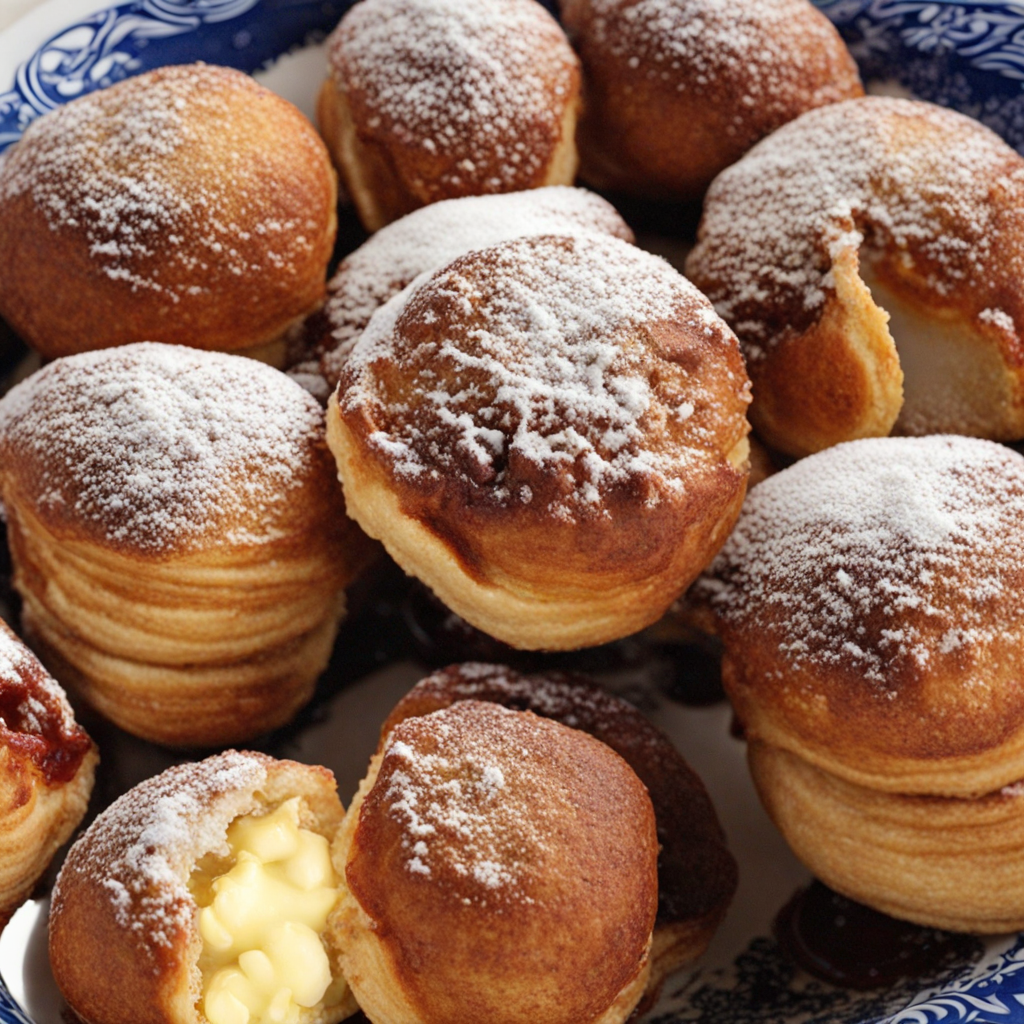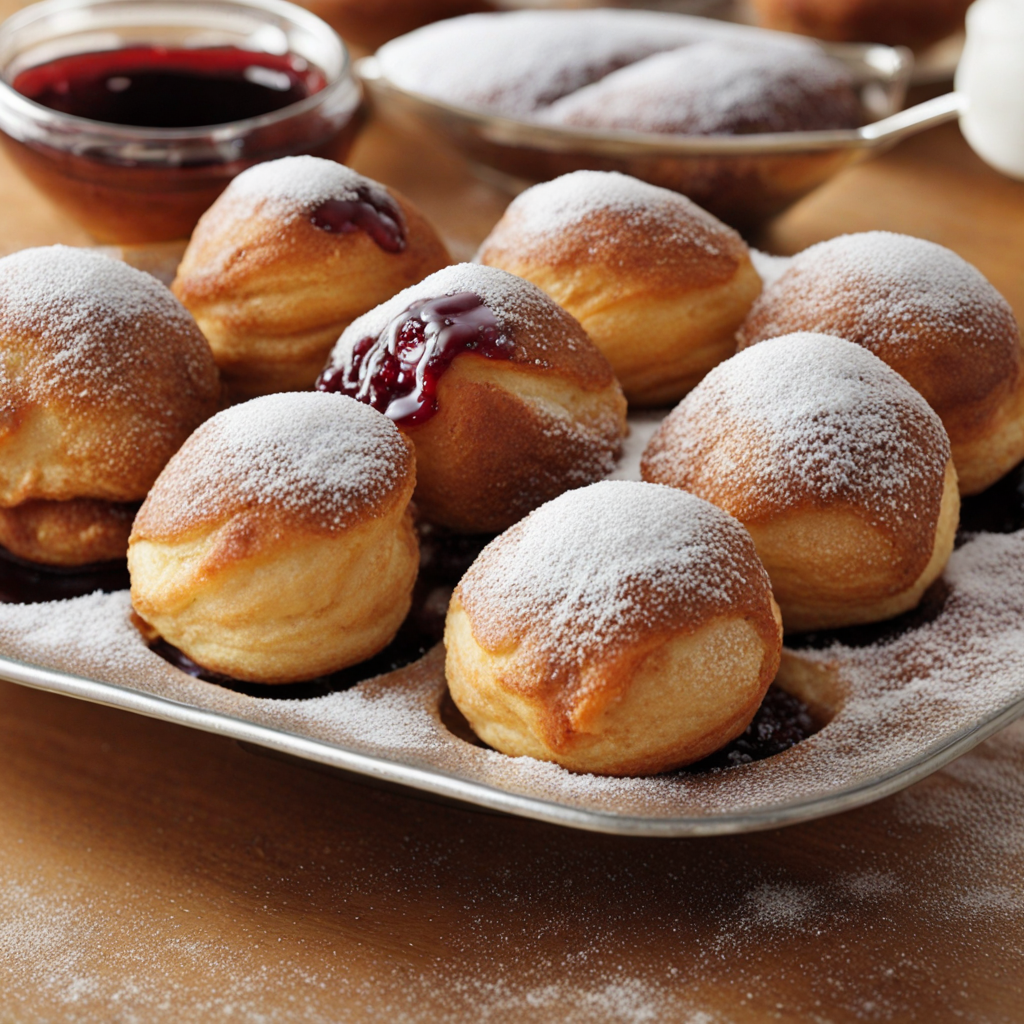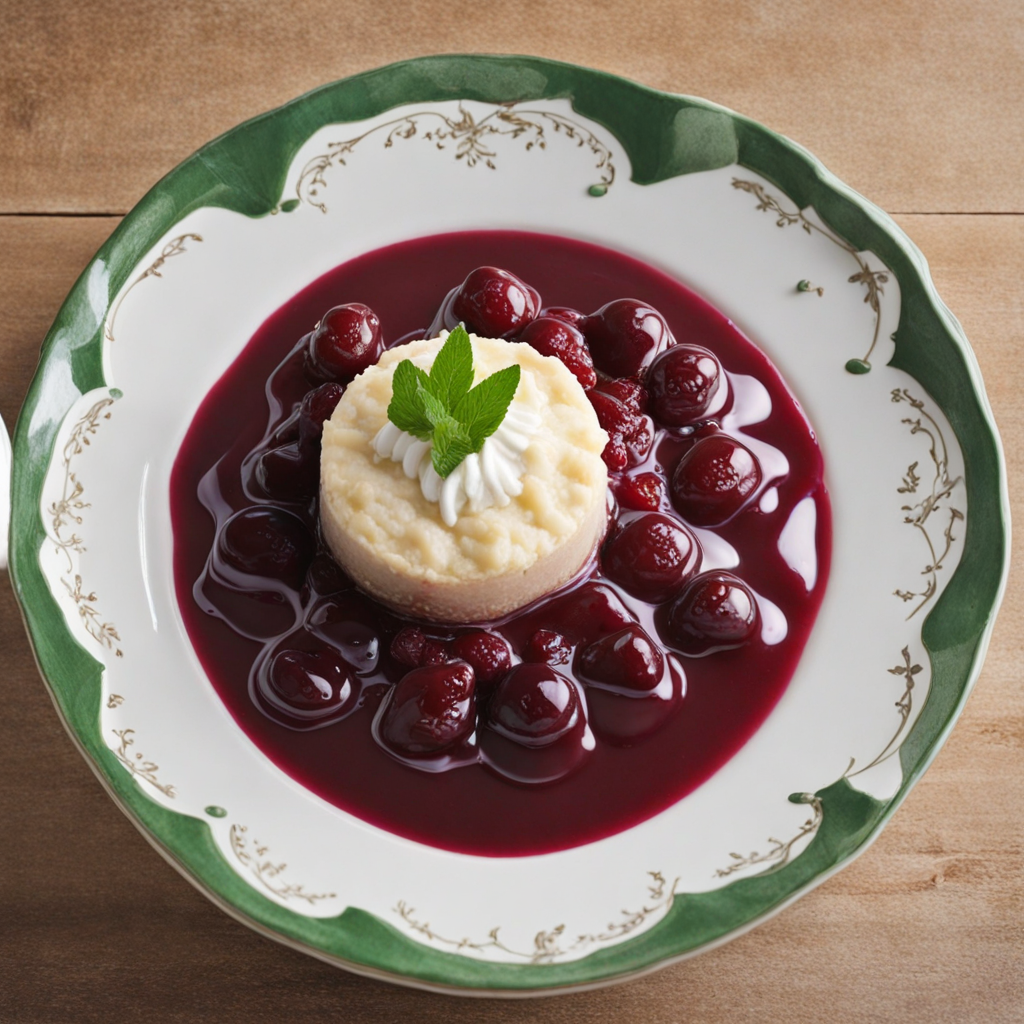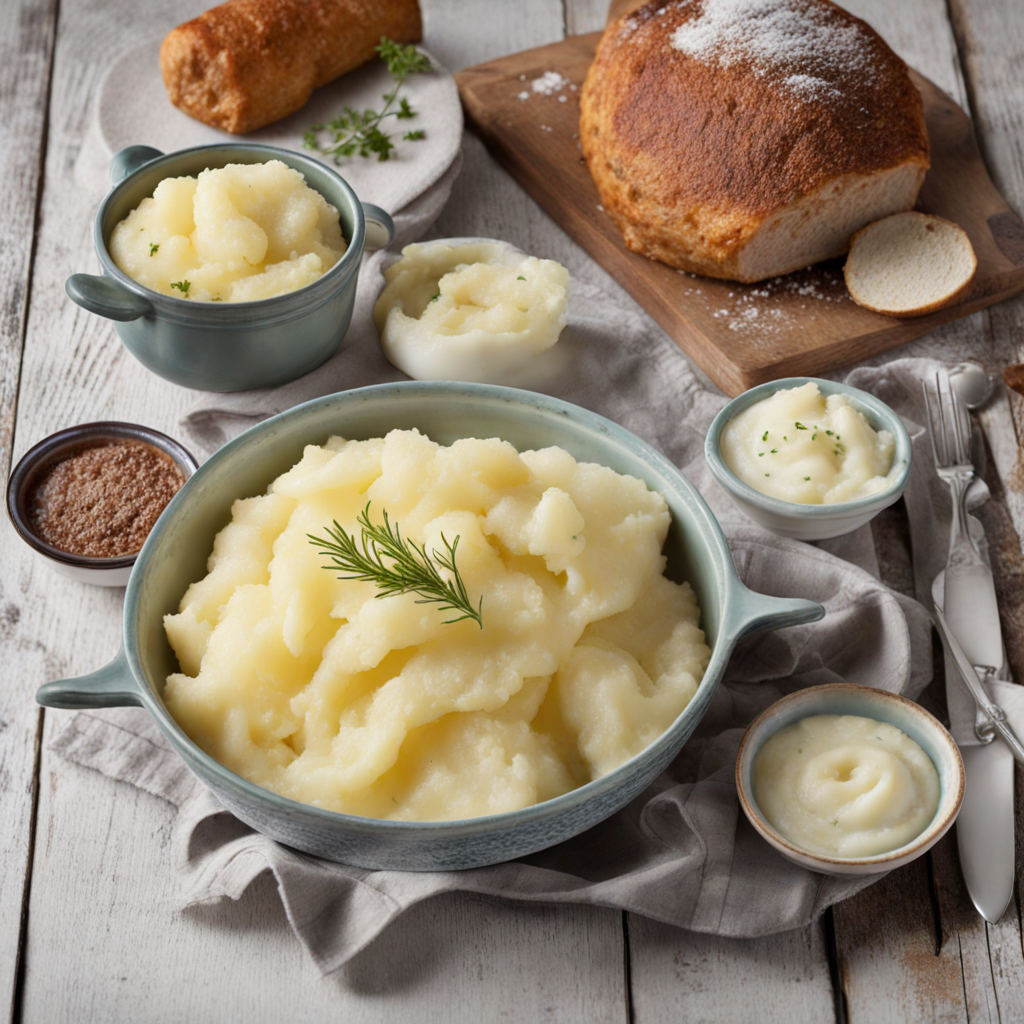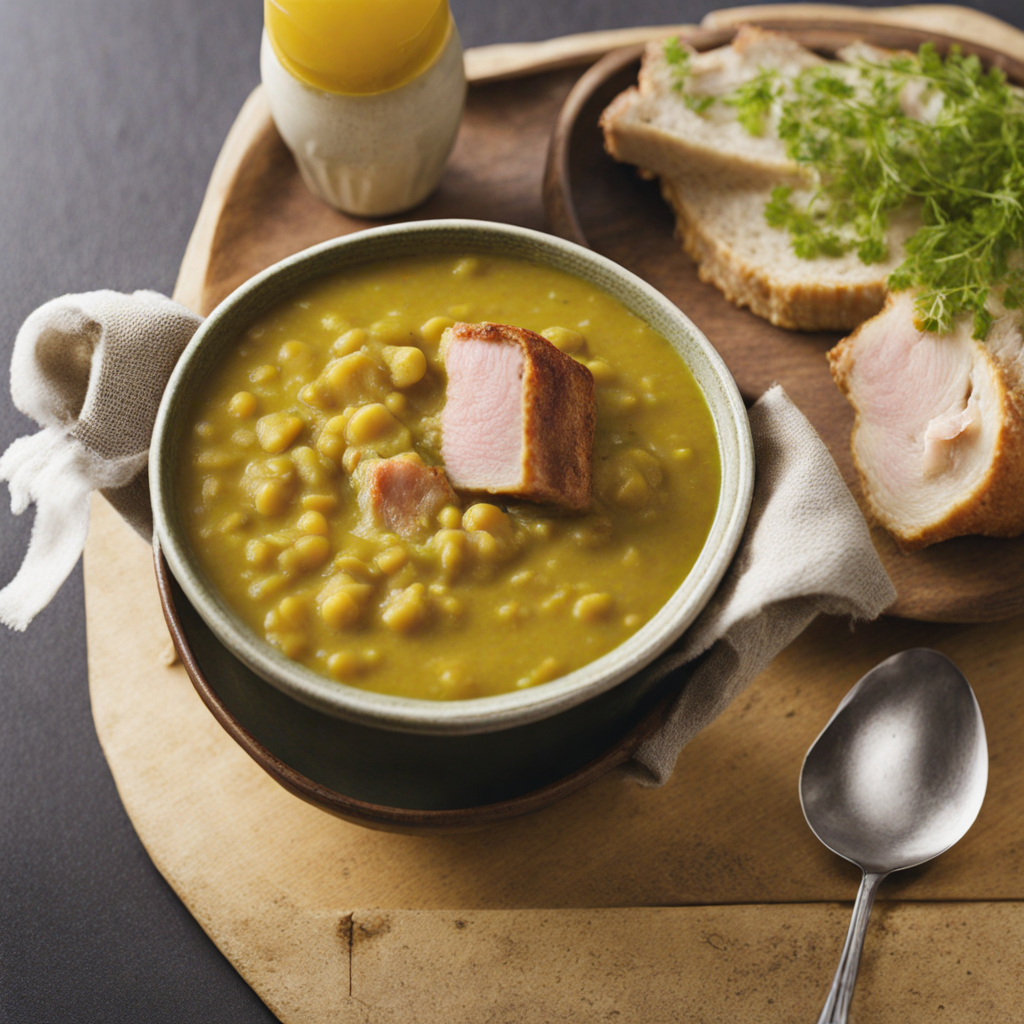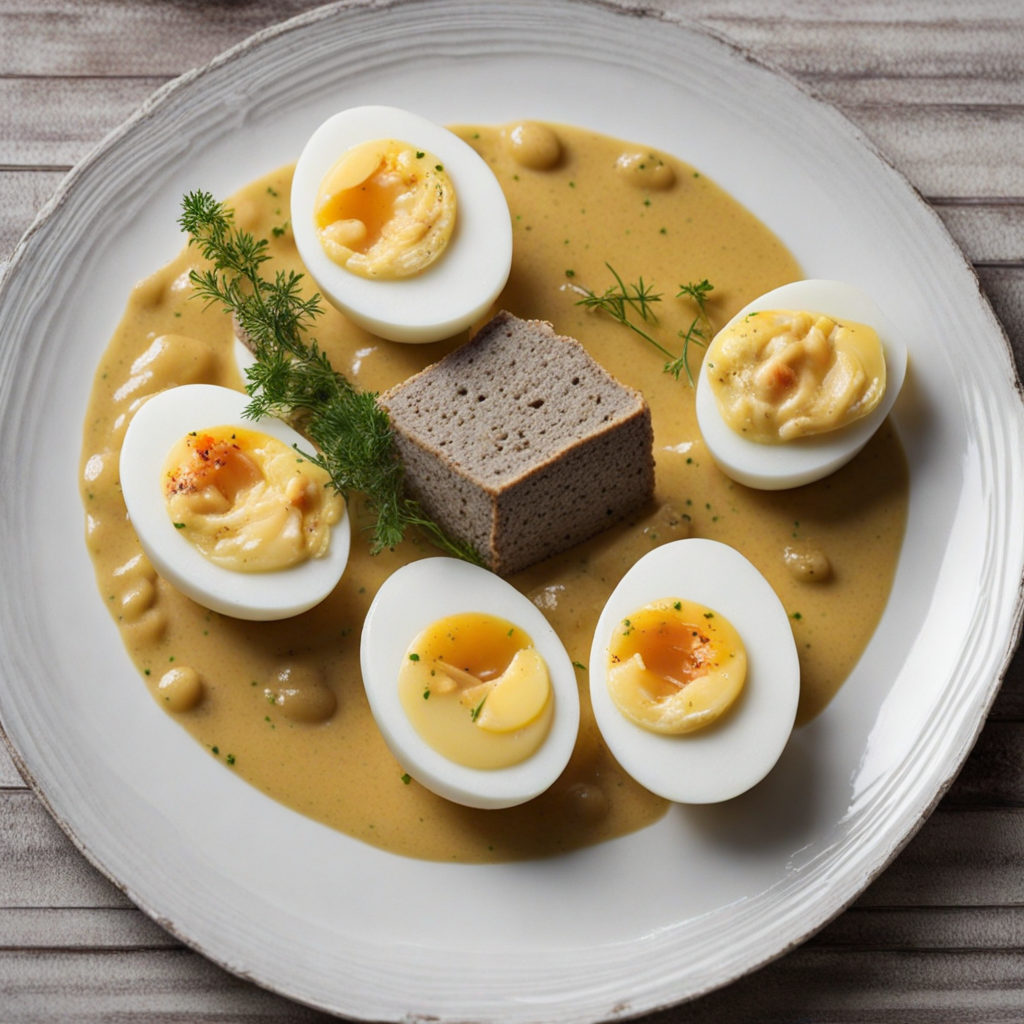Æbleskiver
Æbleskiver are delightful Danish pancake balls that are a beloved treat in Denmark, often enjoyed during festive seasons or as a cozy snack. These spherical delights are traditionally cooked in a special pan with round indentations, which gives them their unique shape and fluffy texture. Made from a batter of flour, eggs, milk, and a hint of sugar, æbleskiver are light and airy on the inside, with a beautifully golden-brown exterior that is irresistibly crispy. The dough is typically enhanced with a touch of cardamom, giving it a warm and aromatic flavor profile that is comforting and inviting. One of the most exciting aspects of æbleskiver is their versatility. While they can be enjoyed plain, they are often filled with delicious surprises like apple slices, jam, or even chocolate, creating a delightful burst of flavor in every bite. Served hot off the pan, these treats are frequently dusted with powdered sugar and accompanied by a side of raspberry jam or maple syrup for dipping, enhancing their already delectable taste. The combination of the soft, pillowy interior with the sweet and tangy dips creates a sensory experience that is truly unique. Æbleskiver are not just a treat for the palate; they are also a feast for the eyes. Their round shape and golden hue make them visually appealing, while the toppings add a splash of color that invites you to indulge. Whether enjoyed at a festive gathering, a cozy breakfast, or a casual afternoon snack, æbleskiver embody the spirit of Danish hospitality and tradition. Each bite transports you to the charming streets of Denmark, making them a delightful discovery for anyone looking to explore new tastes.
How It Became This Dish
The History of Æbleskiver: Denmark's Beloved Pancake Balls Æbleskiver, the delightful Danish treats resembling spherical pancakes, evoke a sense of nostalgia and warmth. These small, fluffy pastries, often dusted with powdered sugar and served with jam, have a rich history that weaves through Denmark's cultural fabric. From their origins to their place in modern Danish society, the story of æbleskiver is as captivating as their taste. #### Origins The word "æbleskiver" translates to "apple slices" in English, reflecting the dish’s traditional inclusion of apple chunks or apple-flavored batter. The origins of æbleskiver can be traced back to the medieval period in Denmark, around the 17th century. The earliest recipes are believed to have been influenced by various European pancake traditions, particularly from the German "Apfelküchle" (apple fritters) and the Dutch "poffertjes" (small, fluffy pancakes). Æbleskiver were originally prepared as a festive treat, often associated with winter celebrations and family gatherings. They were particularly popular during the Christmas season in Denmark, symbolizing warmth and togetherness during the cold months. The dish’s ability to be served in multiple forms, whether plain or filled with fruit, made it a versatile addition to the Danish culinary repertoire. #### Cultural Significance Æbleskiver hold a special place in Danish culture, representing comfort, hospitality, and community. Traditionally, they were cooked on a special pan called an "æbleskiverpande," which features several half-spherical wells designed to create perfectly round pancakes. This unique cooking method invites a communal experience; friends and family often gather around the stove, taking turns flipping the batter with a skewer or fork. In Denmark, it is common for æbleskiver to be served during festive occasions, especially during the Advent season leading up to Christmas. Danish families often enjoy them as part of their holiday traditions, accompanied by gløgg, a spiced mulled wine. The experience of making and eating æbleskiver fosters a sense of togetherness, emphasizing the importance of family and friends in Danish culture. Moreover, æbleskiver have transcended beyond winter festivities. They are now a popular street food item and are enjoyed year-round at fairs and markets. This adaptability has contributed to their enduring popularity, making them a cherished staple in Danish cuisine. #### Development Over Time The evolution of æbleskiver reflects broader culinary trends and societal changes in Denmark. Initially, the recipe for æbleskiver was relatively simple, consisting of flour, eggs, milk, and sugar, with the addition of apple pieces. However, over the centuries, the ingredients and methods have diversified, resulting in various regional adaptations. As Denmark became more connected with the rest of Europe through trade and travel, new ingredients began to influence the traditional recipe. The incorporation of buttermilk and the use of different fillings, such as chocolate, custard, or fruit preserves, became increasingly popular. This innovation not only enhanced the flavor profile of æbleskiver but also allowed for personal expression in their preparation. In the late 19th and early 20th centuries, as Danish immigrants began to settle in other parts of the world, particularly in the United States, they brought their culinary traditions with them. Æbleskiver found a new audience in America, where they were often served at church gatherings and community events. The dish was embraced by a broader audience, leading to an increase in demand for æbleskiver pans and recipes in American cookbooks. This transatlantic exchange further solidified æbleskiver's status as a beloved dish, not only in Denmark but also in countries with significant Danish populations. In contemporary times, the popularity of æbleskiver has grown globally, with many restaurants and cafes offering their own takes on the dish. The rise of social media has also played a role in promoting æbleskiver, as food enthusiasts share photos and recipes, sparking interest in this delightful treat. #### Modern Interpretations Today, æbleskiver continue to evolve while maintaining their traditional roots. Chefs and home cooks alike experiment with flavors and presentations, creating innovative versions that cater to modern tastes. For instance, savory variations filled with cheese, herbs, or vegetables have emerged, allowing for a broader range of culinary creativity. Furthermore, æbleskiver are often served with an array of accompaniments, including syrups, fresh fruit, whipped cream, and even ice cream. This versatility enables æbleskiver to fit into various dining contexts, from casual snacks to elegant desserts. In Denmark, æbleskiver festivals and competitions celebrate the dish, showcasing both traditional and contemporary recipes. These events reinforce the cultural significance of æbleskiver and foster a sense of community among participants and attendees. The dish's ability to bring people together is a testament to its enduring appeal. #### Conclusion Æbleskiver, with their delightful round shape and fluffy texture, are more than just a delicious treat; they are a symbol of Danish culture and tradition. From their humble origins as festive fare to their modern-day status as a beloved delicacy, æbleskiver embody the spirit of togetherness and creativity that defines Danish cuisine. As they continue to evolve and adapt, they remain a cherished part of both Danish heritage and the global culinary landscape, inviting everyone to enjoy the joy of making and sharing these delightful pancake balls. Whether enjoyed at a festive gathering, a cozy family breakfast, or as a delightful street food, æbleskiver will always hold a special place in the hearts of those who savor them.
You may like
Discover local flavors from Denmark


